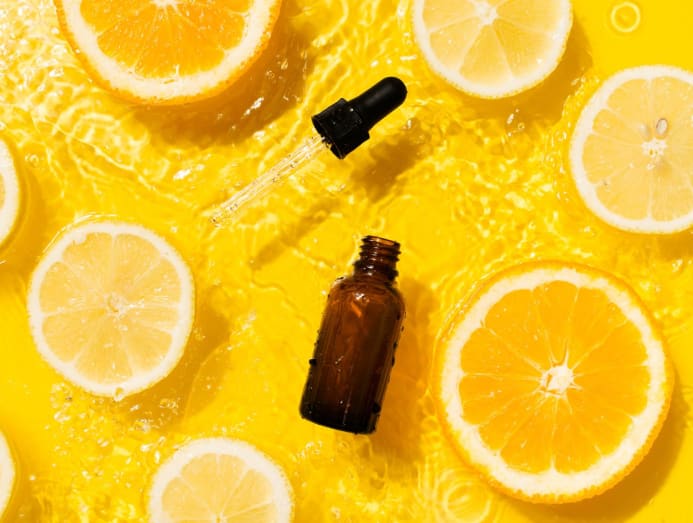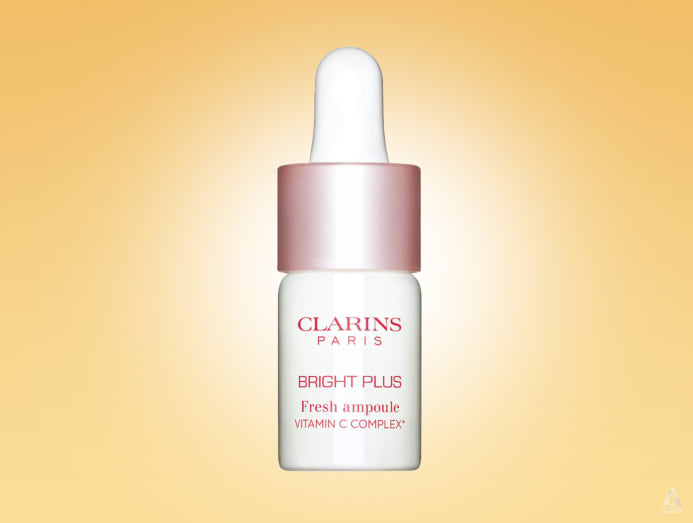Vitamin C for skincare: How to combat pesky dark spots by using this powerhouse ingredient the right way
Skin experts shed light on how to incorporate this powerhouse ingredient to achieve clear, bright skin.

The right way to use vitamin C to combat those pesky dark spots. (Photo: iStock)

This audio is generated by an AI tool.
When it comes to tackling hyperpigmentation, Vitamin C skincare often comes to mind. This is because Vitamin C inhibits the activity of an enzyme, called tyrosinase, that causes dark spots to form in the skin, explained Dr Rachel Ho, aesthetic doctor at La Clinic.
By impeding this activity, it controls the melanin production (the pigment that gives our skin its colour), which in turn, makes the appearance of these dark spots and patches less obvious.
MORE THAN JUST TACKLING DARK SPOTS
So why is Vitamin C dubbed a powerhouse ingredient?

Besides keeping complexion radiant, Vitamin C is also a well-known antioxidant and when applied topically to the skin in skincare, it protects the skin from free radical damage from the environment and UV rays that result in damage to lipids and other molecules in the skin, which can contribute towards premature signs of ageing, said Dr Ho.
According to Dr Lynn Chiam, consultant dermatologist and medical director of Children & Adult Skin Hair Laser Clinic, studies have also shown that Vitamin C can reduce the appearance of wrinkles when used on the skin for at least 12 weeks.
Vitamin C is a co-factor for the enzymes that stabilise the collagen molecule.
It does so by promoting collagen production while also maintaining the collagen you have and protecting it from damage, Dr Chiam added. “Vitamin C is a co-factor for the enzymes that stabilise the collagen molecule.”
Fact is that skin contains high concentrations of Vitamin C, which supports important functions like stimulating collagen synthesis and assisting in antioxidant protection against UV induced damage, shared Dr Chiam.
And as these levels of natural Vitamin C deplete with age, the applying of topical Vitamin C is often encouraged to help combat free radical damage and improve the skin’s overall appearance.
CHOOSING THE RIGHT VITAMIN C
But here’s where it gets tricky because not all Vitamin C is made equal.

The most biologically active (meaning it is easily absorbed by the skin) Vitamin C option is L-ascorbic acid (also referred to as ascorbic acid). It is the strongest and most effective in terms of antioxidant abilities, reducing pigmentation and boosting collagen production, shared Dr Chiam.
However, on its own, L-ascorbic acid is inherently unstable – easily breaking down in the presence of light and air, and with temperature changes, said Dr Ho.
This results in a loss of beneficial dermatological properties when applied to the skin, added Dr Chiam.
To improve the stability of Vitamin C, derivatives of L-ascorbic acid, such as magnesium ascorbyl phosphate (MAP), ascorbyl glucoside, 3-0-ethyl ascorbic acid (EAC), tetrahexyldecyl ascorbate (THDA) and ascorbyl tetraisopalmitate, are often used in skincare products.
Generally, Vitamin C derivatives are more stable and less likely to degrade, and this prolongs its shelf life in your products, said Dr Ho.
And when absorbed in the skin, these Vitamin C derivatives undergo an enzymic conversion to become L-ascorbic acid, which can increase its efficacy in working on your skin issues. However, Dr Ho cautioned that extent to which the derivatives convert into L-ascorbic acid is still unclear. “It is not a 100 per cent conversion,” she added.
BEST WAYS TO USE VITAMIN C IN YOUR SKINCARE ROUTINE

1. Opt for 10 to 20 per cent L-ascorbic acid
For the most effective results, Dr Chiam advised opting for one that has L-ascorbic acid at a strength of 10 to 20 per cent and a pH lower than 3.5.
This is because for anything beyond 20 per cent, the benefits are negligible and the risk of skin irritation increases, added Dr Ho.
2. Choose MAP for drier or sensitive skin
Not only is this Vitamin C derivative much gentler on the skin, but the molecule is easily absorbed into the skin and has a hydrating effect on the skin by decreasing trans-epidermal water loss, said Dr Chiam.
3. Boost Vitamin C efficacy with Vitamin E and ferulic acid
According to Dr Chiam, including Vitamin E to Vitamin C can increase its efficacy by four times. But the perfect combination is 0.5 per cent ferulic acid (an antioxidant-rich plant-derived ingredient) with 15 per cent L-ascorbic acid and 1 per cent vitamin E.
“This can increase the efficacy of vitamin C by eight times,” said Dr Chiam. Importantly, this trio of actives has also been found to be effective in reducing acute and chronic photodamage.
But that’s not all. The addition of vitamin E and ferulic acid can increase the stability and permeability of L-ascorbic acid too, said Dr Ho.
4. Choose airtight, dark coloured packaging
With L-ascorbic acid easily oxidising with light and air, the product packaging is important to protect the integrity of the Vitamin C within. Ascorbic acid is almost colourless and it changes to a deep amber colour when it has oxidised. Once oxidised, it loses its antioxidative properties and will no longer be effective, explained Dr Chiam.
To ensure its efficacy, a packaging that is air-tight and dark coloured will reduce the chance of oxidation. In addition, storing your product somewhere cool, dark and dry would help as well.
And once opened, Dr Chiam advised using your L-ascorbic acid infused product every day before it reaches its oxidised state and also keep it in the fridge to prolong its shelf-life.
SAY GOODBYE TO DARK SPOTS WITH THESE SKINCARE PRODUCTS
1. Q+A Vitamin C Brightening Serum, S$25.15

Encapsulated vitamin C paired with volcanic soil and hyaluronic acid, this highly stable formula ensures that its properties remain effective in targeting hyperpigmentation and even signs of ageing. The result: A youthful and radiant complexion.
Available at Guardian stores.
2. Neal’s Yard Remedies Vitamin C Brightening Booster, S$38

The serum booster combines ascorbyl glucoside (a more stable vitamin C derivative) together with Kakadu plum and hyaluronic acid to protect skin against free radical damage while keeping complexion even and bright.
Available at Neal’s Yard Remedies stores and counters.
3. Urban Jungle The GOAT Face Serum, S$40

Besides vitamin C, this brightening serum is also packed with skin-loving actives like niacinamide, ferulic acid and hyaluronic acid to not only tackle dark spots but also keep complexion healthy and strong.
Available at www.sephora.sg
4. Uriage Depiderm Anti-Dark Spot Brightening Booster Serum, S$79.90

A brightening serum that’s been specially tested on Asian skin, it’s enriched with 20 per cent stabilised vitamin C together with pea extract and sucrose to reduce melanin production and address hyperpigmentation woes.
Available at Guardian and Watsons stores.
5. Clarins Bright Plus Fresh Ampoule, S$190 (box of four vials)

An intensive anti-dark spot treatment that combines 15 per cent of vitamin C, 10 per cent of pure ascorbic acid and 5 per cent of vitamin C derivative to tackle hyperpigmentation issues. In addition, its fresh-mix packaging – the duo-layered formula only mixes on application, promises to deliver results in just seven days.
Available at www.clarins.com.sg






